Our tutor Steve Mepsted shares some of his thoughts and pictures about Street photography from his practice.
Definition of Street Photography
For the purposes of this article I will define Street Photography as un-posed, candid shots of something happening in the street or a public place, most of the time street photographs are pictures of people; fellow humans and our interaction with each other and our environment. For me Street Photography is about capturing a sense of the world we all inhabit. Street photographs are always candid, they are always “found”, and they are intensely social photographs, they are mirror images of society, springing un-manipulated from continuous, ever-changing found sources.
“You can’t rehearse a Street Photograph!” Henri Cartier-Bresson.
The origins of street photography are interesting. The bulky cameras of the late 1800’s, situated in the studio and fixed to tripods, were supplanted in the 1920’s by portable hand held cameras which used 35mm roll film. One could now slip a camera into a coat pocket and freely roam the street. Society was changing too – in post-war Europe more people were leaving the safety of the sitting room, women had more freedoms and workers more leisure time. The streets were busy, thriving places and the human condition was on display for all to see – and photograph. ‘Street’ is a difficult term to define precisely – indeed a photograph taken on a beach can be said to be a street photograph, one taken in a field too, or up a mountain. The Street photograph is not defined merely by what it depicts but by a set of shifting cultural values that refer to a certain ‘look’ of something, a ‘feeling’ even, an ‘attitude’ certainly. As I have alluded; the term ‘Street’ as applied to photography, is used to stand in for ‘Social’ or ‘Public’. The street photograph is a referent not an index.
So, for me, street photographs are not only pictorial representations but also senses of public space, of social interaction, that tell us something about the human condition in a way that a portrait or a posed image cannot. ‘Street’ is a certain ‘look’: halfway between a movie and a photograph. A good street photograph can give you a sense of the smell of a place, the sound of a place. Close in form to ‘Documentary Photography’, street photographs can act as extremely reliable records of dress, mannerism and human relationships over time.
“99.9% of street photography is failure” – Alex Webb
Street photography is difficult and a really great street photograph does not come along every day, or even every year! Street photography often thrives on luck, chance and happenstance. However the good street photographer learns how to make their own luck: street photographers often talk of a kind of “zone”, achieved after a certain time out shooting – this is your photographic eye and brain tuned up, ready to make the most of luck; placing yourself in its way.
In The Zone
Sometimes one experiences a kind of special sense – a developed vision, a sense of premonition, reading a scene before it happens and actively ready to grab the moment when it does. But luck is only part of the equation. Your attitude to your photography is the greater part. I enjoy playing a waiting game; watching the world unfurl and beat a rhythm before me. Once I see that something is happening – a set of shapes, a funny moment, a striking juxtaposition, I press the shutter. If nothing reveals itself I am also happy to move on, in the knowledge that something else will soon be revealed – another piece of street theatre is busy rehearsing itself. Conversely, and frustratingly, a good opportunity can come and go without a seconds warning and you need to be ready to take your chance. Most often its gone before you get it. I believe it is true for every street photographer who ever existed: their best photographs are the ones they never took!
“There is a creative fraction of a second when you are taking a picture. Your eye must see a composition or an expression that life itself offers you, and you must know with intuition when to click the camera. That is the moment the photographer is creative. Oop! The Moment! Once you miss it, it is gone forever.”- Henri Cartier-Bresson
Overall, street photography is not a planned event, it is not predictable in outcome. You can only be as prepared as possible and cross your fingers (actually, don’t cross your fingers – that may slow you down!) The art of street photography is as random and exciting as life on the streets itself. This is also what makes street photography unique: the street is not a photographic studio, it does not care to stop and pose, it has no need for a stylist, or to take regular breaks. It just goes on and on and on around you; in front of you; behind you and beyond the next corner. The thing to remember is that while you are out in the theatre of the street – you are also a player on its stage! Understanding this is one of the secrets to becoming a good street photographer.
Well, that’s one definition of street photography, it is how I feel about it as a practitioner and it might also be your view. It is a relatively ‘purist’ view and there are many other standpoints – and all of them equally valid. I could write more but need to press on. In a future article I shall look at contemporary approaches to street photography that challenge and break the ‘rule’.
I will now share with you some tips and tricks to help you while you are out shooting on the streets. They are not definitive, concrete rules and I do not claim they will be useful to everyone’s style or needs. However they are offered as ways to push your photography outside of the usual manner in which you may find yourself shooting. They are exercises – a kind of checklist, that I often use to stop my practice from going stale and to keep the whole thing fun and creative. There are as many ways to shoot the streets as there are events happening on them, so you may wish to experiment with the following and then deviate to what suits you – let me know what special technique you like to use, have you found a different approach that has helped you take better photos?
“Be yourself. I much prefer seeing something, even it is clumsy, that doesn’t look like somebody else’s work.” – William Klein
Your Camera
If we agree, as stated at the beginning of this article, that street photography is usually unposed, candid and focuses on human behaviour and our interaction with the environment then it is pretty obvious that you will need to blend in. Though it may be tempting to bring your whole camera kit out, you will more than likely stick out like a sore thumb! It’s actually kind of a relief to be unburdened from the choices and decisions (and shoulder aches) that three cameras and five lenses forces upon you. It’s useful to limit oneself and as a compromise try going out one week with only one camera and a 50mm lens. The next week go out with a compact camera and see how much you blend in. The following week, just take your mobile phone out! Shoot all week with your chosen kit and see how you learn to understand not only your equipment, but also the difference in the experience you have when interacting with the street. .
So – back to the kit….. my advice is always to use only one camera and one flexible lens. A compact camera such as the Canon Powershot or Fuji X100 are excellent shooters as they are small enough to be slipped into a pocket. They sport lenses with excellent zoom and focal lengths too (however see below on the over-zealous use of the zoom) A small DSLR such as the Pentax K5 is great too as it allows for lens changes and a quiet shutter! These kinds of cameras are light and can be used efficiently when shooting from the hip (see exercise two below). Most importantly they allow you access to a range of creative manual and semi-manual modes that get you off using your camera in ‘Auto’. Another bonus is that due to their diminutive size they do not make you a target for over anxious security guards or indeed the Police. Remember if you are taking your camera out all day then you will need to have a spare battery and/or your charger, plus a memory card large enough to hold your
pictures.
For the ultimate in portable ease and for the potential to get in close I also enjoy photographing on my mobile telephone, the ubiquity of these devices allows one to blend right in with any crowd, the quality of the lenses and camera firmware is getting better and better each year and one can download fun and creative apps to use. ‘Instagram’ and ‘Flickr’ are great platforms to share your pictures and receive feedback, and of course, your photograph can be sent from your phone in a matter of seconds.
As an example I offer this photograph. This was taken on a mobile phone app, in an Underground train deep under London. It is still however a ‘street photograph’, even though it does not involve the use of a ‘proper’ camera and was taken several meters under the street! One thing is for sure, I would not have got the shot if I had tried to use my DSLR.The train was so crowded I couldn’t have even raised the camera! It is a picture of a human event, the rush hour crush, the daily commute; miserable and claustrophobic. The most important thing to remember about your camera is that the photograph is worth more than the price of your camera. People will always be more interested in the content of your pictures than the size of your lens. Or to quote a friend of mine, “People look at my photos and say I must have a fancy, expensive camera, I ask them does a good cook feel the need to show off his pans?”
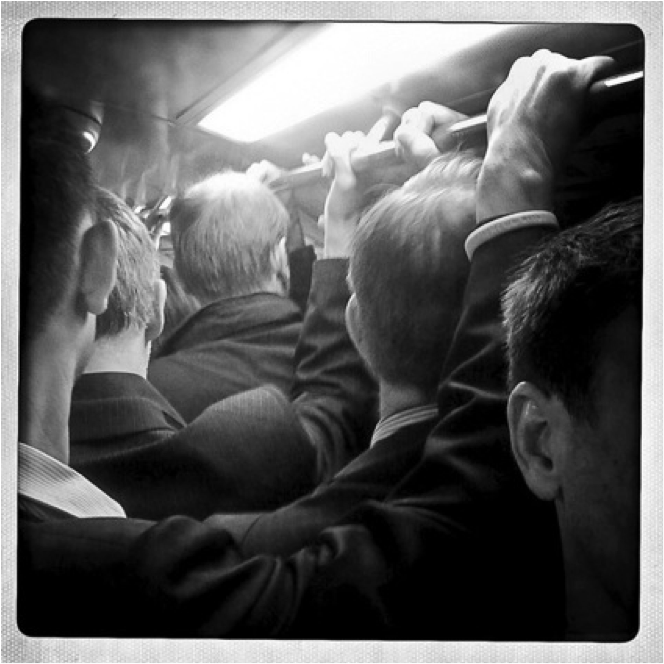
Increasingly ubiquitous – the mobile phone and its on-board camera are now capable of taking excellent street photos. Discreet and silent, they are excellent tools for getting in close and of course for sharing the images straight away!
Your Lens
Try not to always use a telephoto or long lens. This is for several reasons: they are big and conspicuous, are bulky and heavy to carry around all day and they invite suspicion from security people and your potential subjects. People look at you and surmise that you are on a professional job. Although they may afford you distance and relative invisibility from your subjects it is this very distance that lends the resulting shots a kind of ‘spy’ feel. There is, I believe, a qualitative difference in the ‘closeness’ afforded by the use of a telephoto lens, and the true closeness afforded by the use of a fixed short lens. Telephoto photographs most often display none of the real closeness that involves the viewer in your photograph. The subjects can look flat, (it is a characteristic of telephoto lenses that they flatten perspective) isolated, distant and ‘cut off’ from their surroundings; lacking intimacy and interest. You may think that the telephoto offers you so much more flexibility but ironically, you will curse the times when something happens right next to you and you don’t get the shot because your focal length won’t allow it – you’ve got the (real) closeness but not the lens! Let your legs do the zooming with a short prime lens and you will achieve a wider variety of angles and layers; giving your photographs a richness and narrative; the viewer of your image will feel your own closeness to the subject and therefore in turn will be drawn in to your photograph.
“If your photos aren’t good enough, you’re not close enough” – Robert Capa.
Many interesting situations in the street involve interactions between more than merely one or two subjects, affording interesting juxtapositions between several elements. So consider sometimes using a wide angle lens such as a 28mm, 35mm or 50mm to allow for a broad scene with plenty of layered activity to be captured. These lenses are light and portable, they ‘blend in’ and are ‘fixed’ – i.e. they only operate at their stated focal length. These lenses are also called ‘Prime Lenses’ or ‘Fast Lenses’, which are usually better quality and often offer a wider maximum aperture. The fixed focal length means that you use your legs instead of twisting a lens barrel and zooming from a distance. As said above, you are therefore really connecting with your subjects and situating yourself as part of them; not separated or disengaged. In my opinion, the vast majority of memorable street work has been shot with lenses between 28mm and 50mm. If you do not have a fixed or prime lens then use a short telephoto such as an 18-55mm, which is the ‘kit-lens’ that comes with a lot of first time DSLR purchases. You might also consider a 28 –70mm for short telephoto work. There are a lot of interesting focal lengths out there – I really enjoy using my 10-20mm super-wide angle lens for a massive view of the world! Henri Cartier-Bresson used a fixed 50mm lens for all of his street work. He got so used to that lens it became an extension of his eye!
Creating Street Photos
Here are some of my street pictures, these were shot in London, India and America. I have included them here to illustrate a few things one needs to be aware of when approaching a shot.
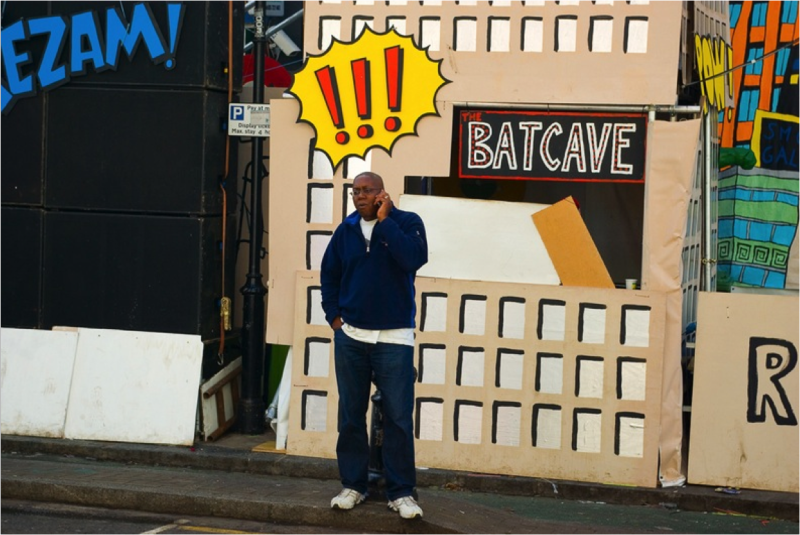
ANGLE OF VIEW. Notting Hill Carnival. I was initially interested in the fabricated street scene. As I approached I saw this man talking on the phone. It was only when I crossed the road to get a different view that I saw the exclamation marks above his head!!! If something looks potentially interesting then look at it from all angles. Something unexpected might just reveal itself.
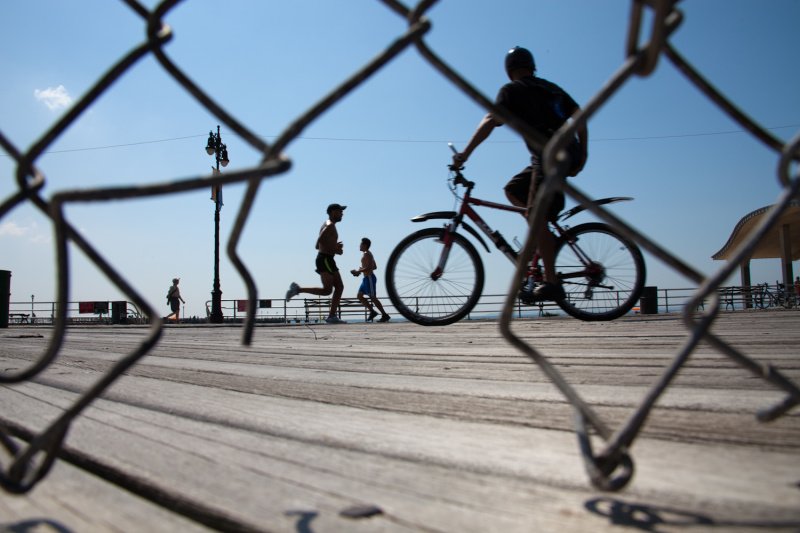
USING A FOUND FRAME. For this shot on Coney Island Boardwalk in New York, I placed my self low behind a gap in the fence and waited for some interesting geometric shapes to occupy the frame I had created. It’s interesting to shoot through gaps like this as one adds layers and context to the photograph.
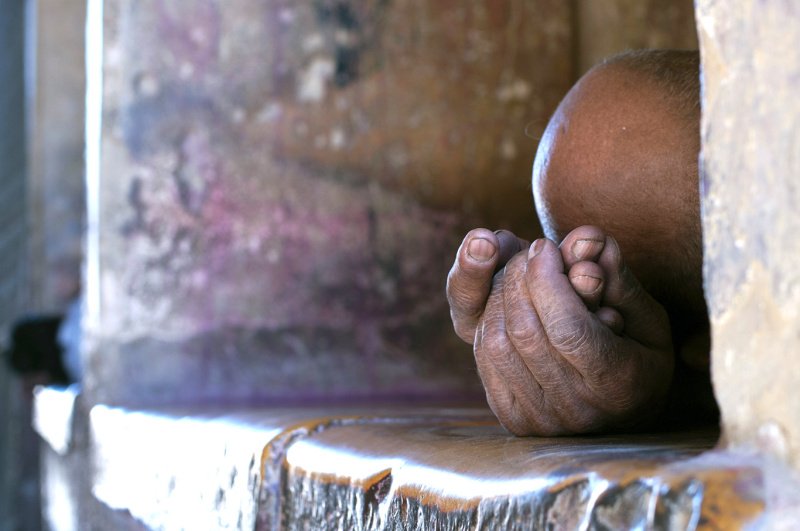
PHOTOGRAPHING TO A THEME. This and the following shot were taken in India. When travelling I often like to shoot within a self-imposed theme. These particular shots were for the theme of ‘Hands’. Shooting this way helps me concentrate and be discriminating, it allows me try different angles and have fun exploring the way I can picture my chosen theme.
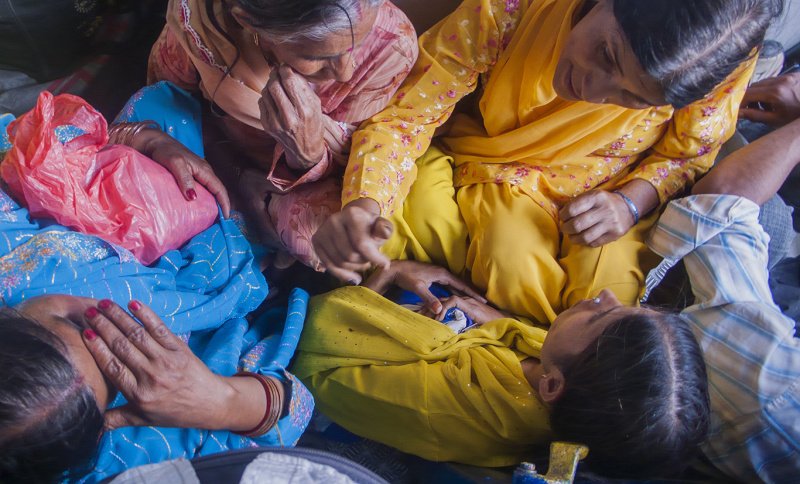
In a cramped train people sat on the floor. These women talked and gesticulated with their hands. I positioned myself above them and shot straight down. Their beautiful coloured saris seemed to me like a landscape. This is not a common shooting angle but it certainly allows for an interesting point of view.
REPEATING SHAPES. Another shot from Coney Island. People spray the sand off their legs and feet with a pressure hose. The rhythm of their legs and the echo in the wet reflection made for a pleasing composition and set of textures. I also like the stripes on the towel mirroring the wood of the boardwalk.
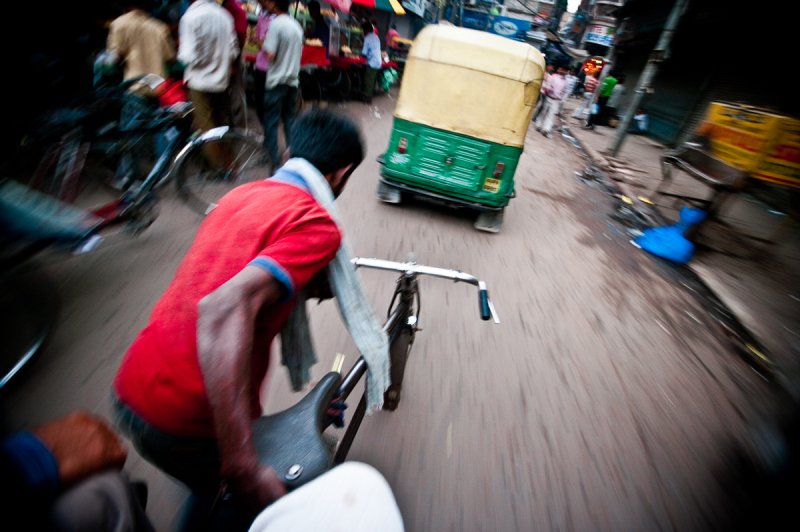
TAKE A TRIP! Its often a good idea to get around the streets on another mode of transport and not just your feet. This rickshaw ride was terrifying! But switching to a low shutter speed allowed for a speedy motion shot from an interesting angle.
USE YOUR PHONE CAMERA. There are times when you don’t have your DSLR or ‘proper ‘ camera with you, well use the mobile. I enjoy the freedom afforded by the speed and efficiency of the lightweight little telephone. The hundreds of camera apps available for download are worth exploring too. This was taken seconds after I had made a telephone call and had seen this chap approaching. I knew he would look great against the red hoarding and blue arrow. I switched to my onboard camera and waited for him to fit in my chosen scene.
FINDING A BACKDROP. It is useful sometimes to find an interesting background to create a bit of theatre in front of. The use of signs, instructions and environmental graphics can supply a counterpoint to your pictures and will often add humour to a scene
Finally I would like to share with you a couple of exercises for shooting on the street. Any photographer can get a bit stale and find themselves repeating the same manner of shooting. We all get a bit comfortable shooting with the same setting on our camera and with the same approach to our subjects so its always good to shake it up and try something new. If you find that you are unsatisfied with your photos, that they don’t excite you, then you might need to give yourself a little assignment. Often this injects life and vigour into your shots, and you yourself come alive again with possibilities. Street Photography is hard enough without it not being at least fun to do! Sometimes all it takes is for you to try a different mode on your camera to give your shots a fresh feel. For example try shooting with a very wide aperture and blur out the background, making your subject ‘pop’.
Find some movement around you and switch to shutter priority to freeze or blur your shots. In a future article I will go into depth discussing the technical aspects of the camera and how you can use manual controls for creative effects. But for now here are two exercises that will help you get better shots because they place you in a certain context with the street, forcing you in the first instance to be patient and observant, and in the second, to be brave and throw caution to the wind, accepting what happens! I hope you enjoy practicing these. The first assignment is called “Be The Flower, Not the Bee” and the second is “Shoot From The Hip”
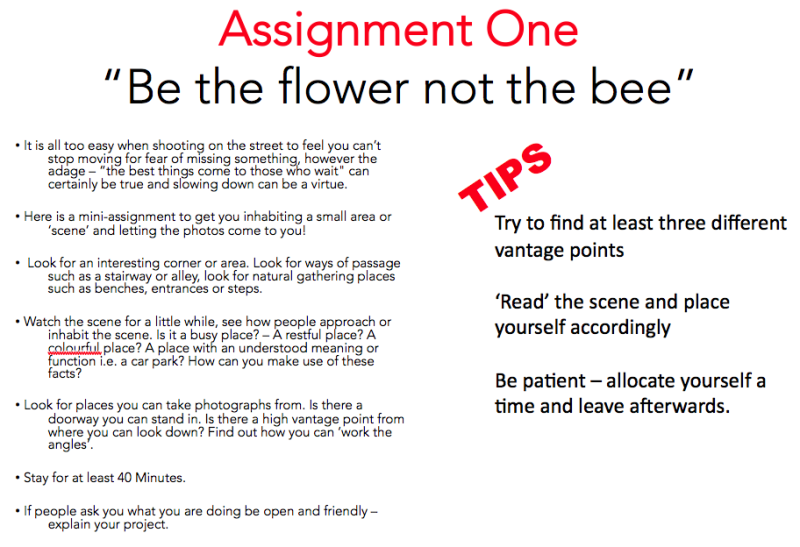
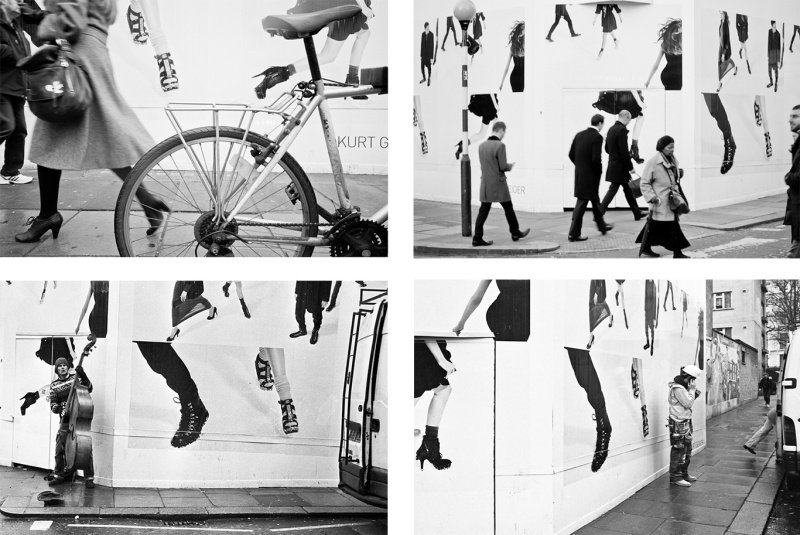
“BE THE FLOWER, NOT THE BEE” A collage of shots all taken at the same location. I spotted this shop hoarding and saw the possibilities. Waiting for things to come to you is a great way to thoroughly explore a scene. Don’t buzz around, just be patient – good things come to those who wait!
Would you like to join our next Street photography workshop? Just click here and book your place!

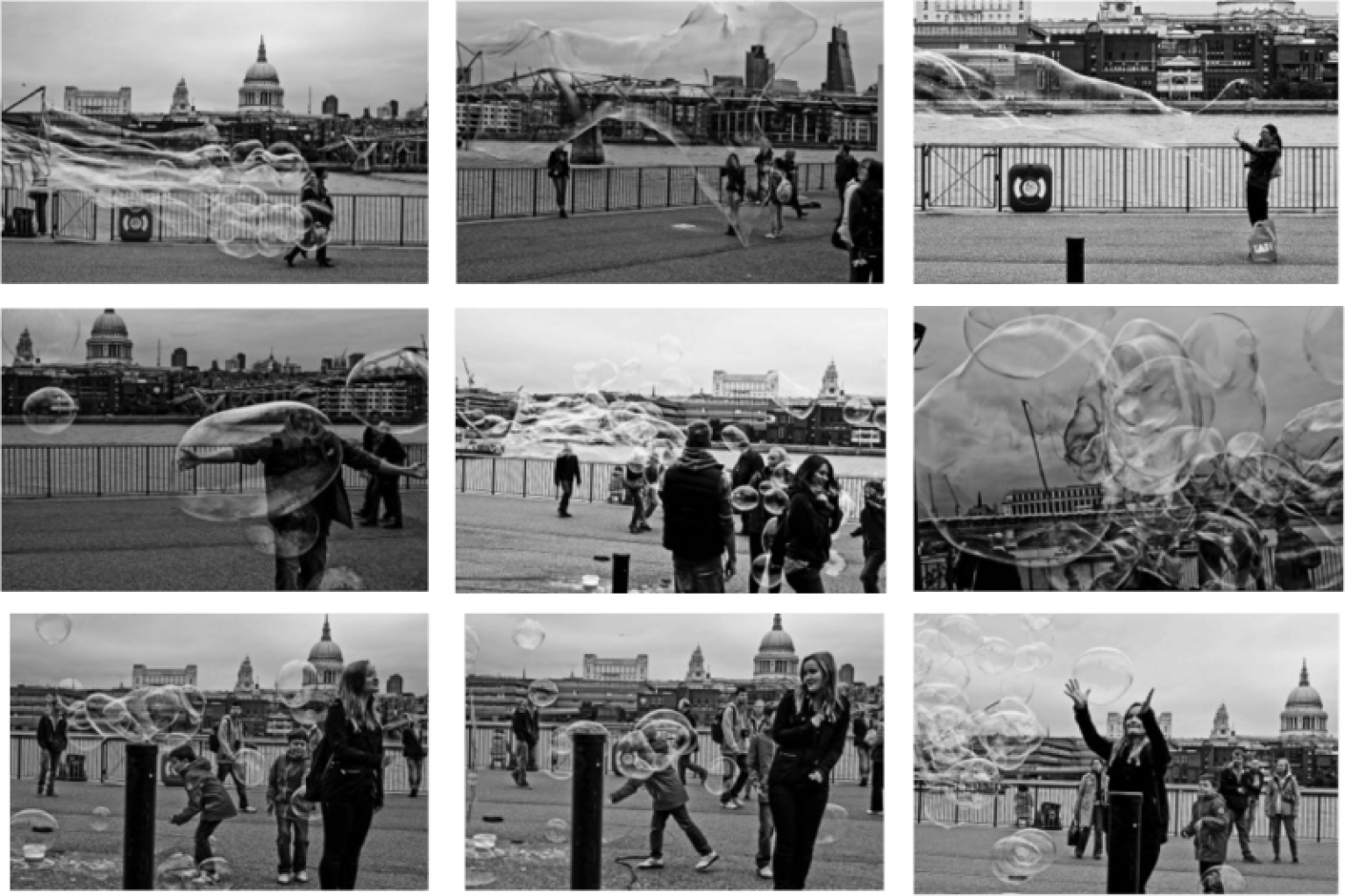
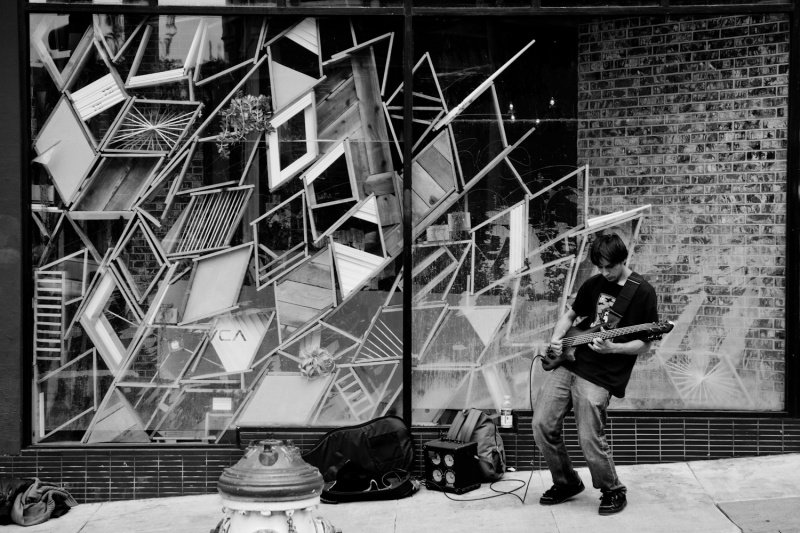

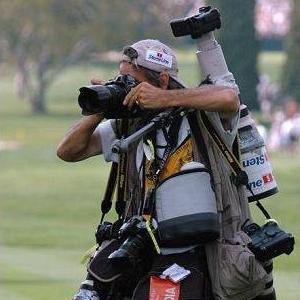


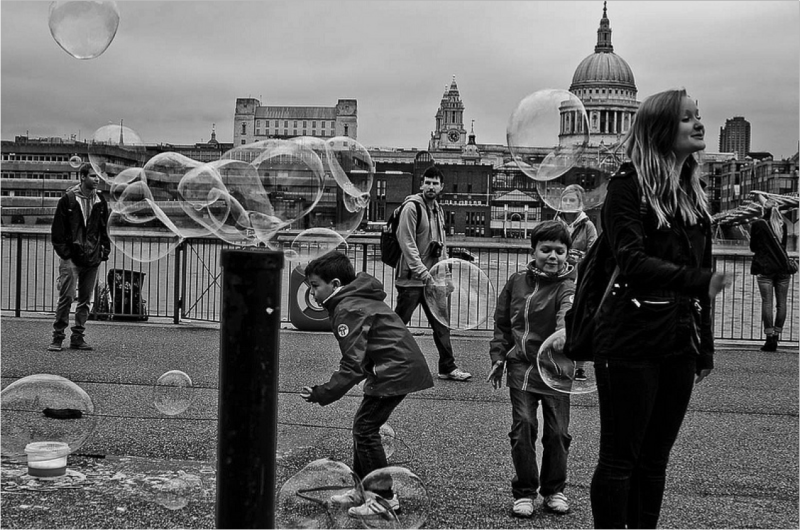
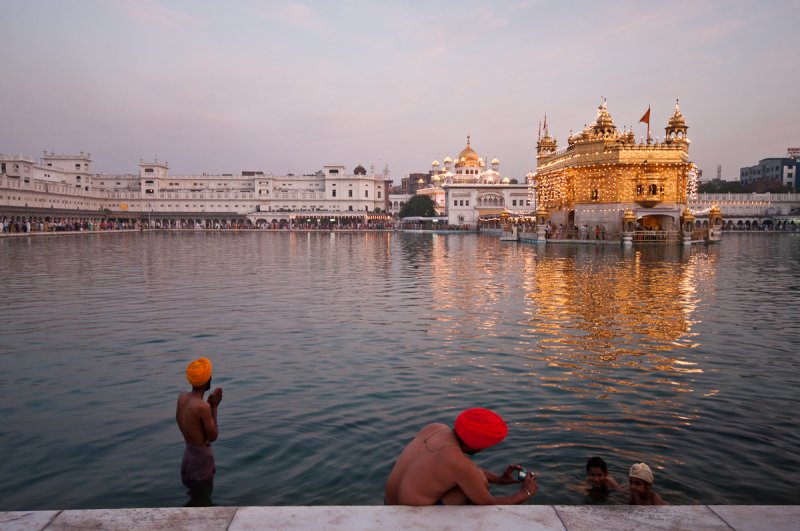
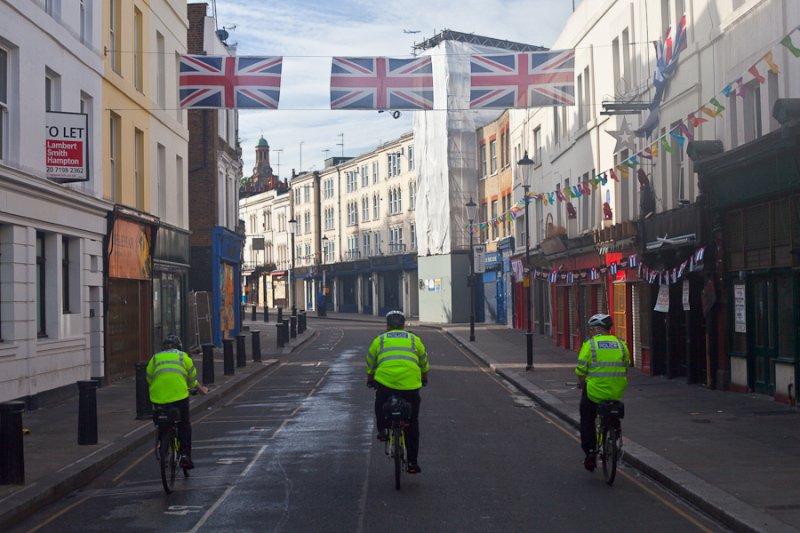
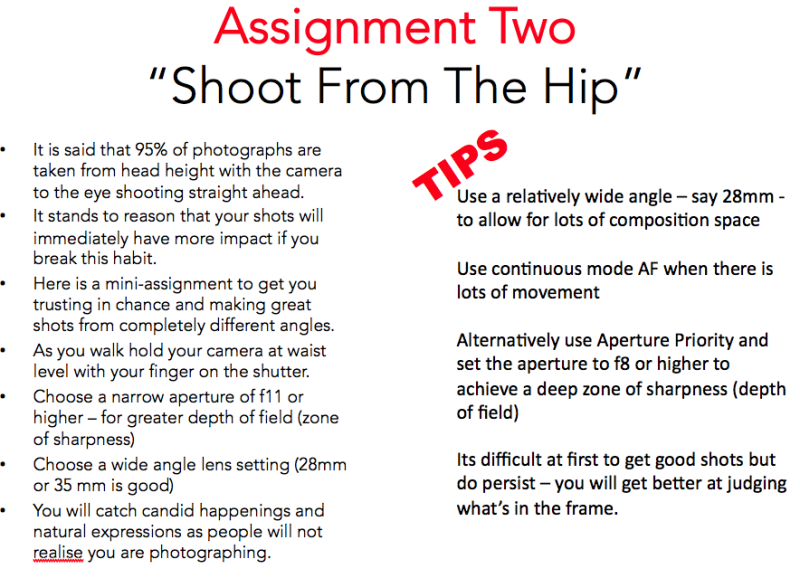

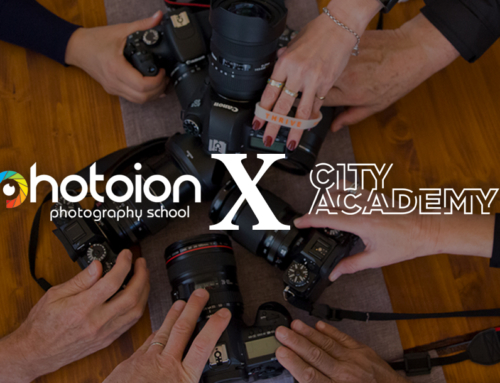
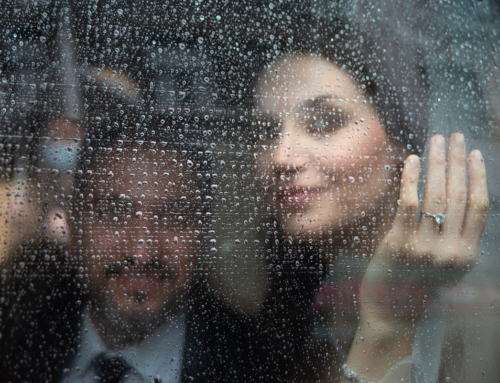
[…] STREET LIFE: street photography tips and tricks from Steve MepstedRead more […]
[…] Read more […]